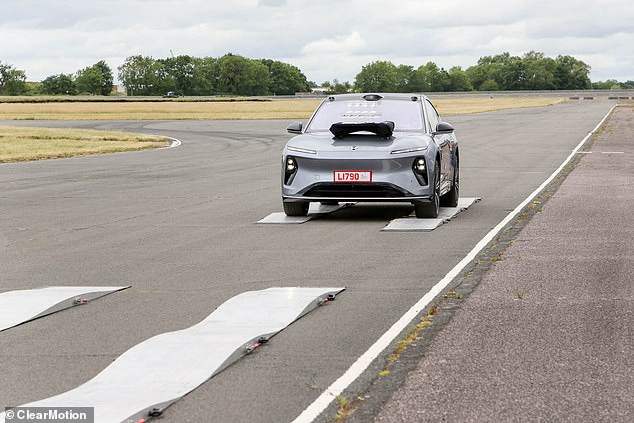
World’s First Motion-Sickness-Proof Car Delivers Unparalleled Smooth Ride Experience
Say Goodbye to Car Sickness? ClearMotion’s Revolutionary Suspension Tested
For those who dread winding roads due to motion sickness, relief may be on the horizon. Boston-based ClearMotion claims its cutting-edge active suspension can “eliminate motion sickness” by smoothing out bumps and jolts. MailOnline tested the system in Warwickshire, UK, using a NIO ET9 luxury car equipped with the tech. Here’s what we discovered.
How It Works: “Noise-Cancelling” Suspension
ClearMotion’s system replaces traditional passive suspension (which dampens movement) with motors above each wheel and a smart computer. These components act like noise-cancelling headphones for the road, pushing and pulling wheels to neutralize vibrations. CEO Christian Steinmann calls it the “sky hook” approach: the car’s body stays level while wheels adjust to road contours. Drivers can even toggle between a plush ride or sportier handling.

The NIO ET9’s “Champagne Mode” allows driving over speed bumps without spilling a drop.
Testing the Tech: Like Floating on a Cloud
On UK backroads and a test track, the NIO ET9 delivered an eerily smooth ride. With the system on, potholes and bumps felt muted—until it was switched off. Suddenly, the cabin became a rocking, jolting chaos. One pothole-ridden stretch went from “velvety” to “stormy sea” instantly, proving how effectively ClearMotion cancels motion. Even at high speeds on a test track, the car stayed stable, and reading in the back seat caused no nausea—a motion sickness miracle.

Actuators replace traditional shocks, reacting 10x faster than passive systems.
RoadMotion: The Future Is Predictive
While the active suspension impressed, ClearMotion’s forthcoming software, RoadMotion, aims to perfect the experience. By mapping roads centimeter-accurate using GPS and suspension data, the system anticipates bumps instead of just reacting. Marco Giovanardi, Technical Fellow, likens it to “Shazam for potholes”—recognizing road patterns to plan suspension movements ahead.

RoadMotion maps roads in real time for proactive adjustments.
In testing, RoadMotion’s mapped test track allowed the car to glide over aggressive sine-wave bumps at 50 mph—barely noticeable. The company predicts just one week of commuting would map 90% of a driver’s route, with crowdsourced data covering entire regions rapidly.
Does It Beat Motion Sickness?
Throughout testing, activities prone to triggering nausea—reading, texting, eyes-closed rides—were attempted. While mild discomfort lingered, sickness never struck. CEO Steinmann believes full elimination requires autonomous driving, where AI controls acceleration and steering.

ClearMotion’s vision: pairing with self-driving cars for zero-sickness travel.
The Bottom Line
Currently exclusive to the NIO ET9 (launching in the UK by 2027), ClearMotion’s tech promises a transformative ride. While not yet perfect, it’s a giant leap toward stress-free travel—and a glimpse into the future of autonomous comfort.
Key Features:
- Active Suspension: Motors adjust wheels 1,000x/sec.
- RoadMapping Software: Predicts road imperfections.
- Champagne Mode: Flattens bumps for delicate cargo.
For motion sickness sufferers, smoother roads are closer than ever.


